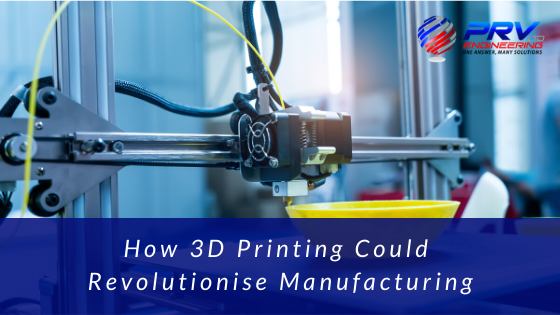
3D Printing is not a new concept but how it’s developing and advancing is a different story altogether. We are within reach of more affordable and rapid prototyping and instant manufacturing. With that in mind, how has 3D printing changed the manufacturing industry as we know it today? What can we expect going forward?
Mainstream 3D Printing Technology
When 3D printing went mainstream, all the hype was around people believing that they could print anything they wanted at home. This may be true but it’s certainly not where 3D printing stands out the most.
In all fairness, 3D printing has already revolutionised life for the home engineer those in rapid prototyping where it’s even helped astronauts on the International Space Station (ISS). As impressive as these advancements have been, they are ‘side-effects’ of the bigger picture which is creating products without limitations, faster and easier.
A Closer Look At The 3D Printing Industry
3D printing is also referred to as additive manufacturing and it’s been around for decades. Advances in technology fuelled each segment’s growth and who knew it would bring us to where we are today?
When it all started, very few people thought 3D printing would change any industry considering it was extremely expensive. However, prices dropped as new technology entered the market which was the beginning of 3D printing changing the manufacturing sector.
Types Of Manufacturing
Before we lead you to assume anything, let’s look at which manufacturing industries we are referring to. It may not seem like it but there are many key differences. For starters, there is home manufacturing performed by hobbyists, backyard engineers and innovators. The next sector is large scale production manufacturing which is used by companies and industries. 3D printing has changed and benefitted both areas of manufacturing, albeit in slightly different ways.
Personal, Small Scale Manufacturing
Looking at personal and small scale manufacturing, 3D printing has changed the sector completely. Thanks to prices dropping almost by the day, it’s more affordable for engineers who can rapidly prototype parts in hours. A common sight in small scale 3D printing is the use of plastic filaments like ABS or PLA. These are most commonly used in smaller 3D printers which are ideal for the personal manufacturing sector.
While these 3D printing machines are not that fast, they are super-efficient, easy to operate and extremely accurate. In terms of how 3D printing has impacted the industry as a whole, this technology is in almost every workshop across the world.
Recommended: ‘How Does Additive Manufacturing Metal Differ From Plastic?’
3D Printing In Large-scale Manufacturing
The other manufacturing sector we want to talk about is large-scale engineering which plays a massive role in the global economy. With the costs of large-scale 3D printing machines dropping, many companies have started manufacturing products with various additive techniques.
Even though more products are being produced using 3D printing, the greatest potential is actually in the technology itself. If you think about realistically, there are so many possible applications now and in the future.
Another impressive benefit, and the reason why costs can be lowered, is that traditional manufacturing techniques are subtractive which produce plenty of scraps. This increases products costs where 3D printing is an additive process where only the material required for a part is used. The results speak for themselves as it’s more affordable while allowing for greater efficiency and precision.
How Has It Impacted The Manufacturing Sector?
As impressive as additive manufacturing is today and it’s huge potential, there hasn’t really been a big shift in the manufacturing industry. That said, the theory behind the improvement of the technology is exciting and could lead to substantial growth in the industry.
It’s not as if there aren’t any great 3D printing accomplishments as additive technology has been used to build cars, houses, bolts, components and more recently, safety gear to help fight COVID-19. The only obstacle that stands in the way of 3D printing being used more frequently is that many newer techniques have cost, speed and designability on their side.
Related: ‘Additive Manufacturing In The Aerospace Industry’
Final Thoughts
Big changes are happening across the manufacturing sector and so is the potential for 3D printing. A growing possibility is that 3D technology could move the manufacturing industry into a fully customisable practice. All we know is, whatever industry you’re in, 3D printers will play a pivotal role in one or several parts of your business.
PRV Engineering takes pride in offering quality precision engineering and custom fabrications services. They work closely with several industries including aerospace, defence, automotive, oil and gas, construction and rail. Over the years they have invested heavily in acquiring and training highly skilled staff and state-of-the-art machinery.
Get in touch with PRV if you need help with a manufacturing project regardless of shape or size. They can manufacture products in all materials from the most basic mild steels to the more exotic Monel, Inconel, Hastelloy and Titanium.
One comment
Leave a Comments Cancel Reply
This site uses Akismet to reduce spam. Learn how your comment data is processed.


 Mail:
Mail: 




[…] in technology, 3D printed homes can be created in no time at all. At the same time, the manufacturing sector has already seen the tremendous benefits it has to […]